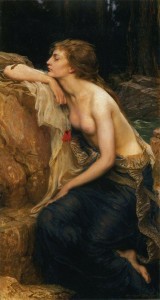Jane S. Morrissey's Blog, page 3
July 17, 2014
Camp NaNoWriMo
Why do werewolves run in a pack? Vampires are usually portrayed as solitary creatures. But werewolves live and die as a pack. It’s their strength. Alone they are weak, but together they can overcome any challenge. Cole, the hero from the Circle of Dreams, for example was separated from his brutally dysfunctional pack as a child. As a young adult he and his twin sister have built a team of psychics that serve a part of that pack function. I sometimes wonder if authors are like this… writing is a solitary activity. As much as we live to write and may love the process of creativity, at times it can be a difficult thing to go it alone. Where writers go to find their pack is an interesting question. One of these resources is Camp NaNoWriMo, which provides community to help get writers across the finish line and to the last page.
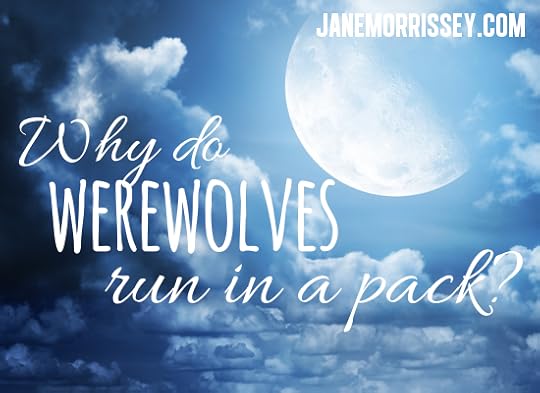
Perhaps one of the greatest weakness and greatest strengths of being an author is solitude. It is a necessity, but can also lead us into the oblivion of distraction if we’re not careful. Editors, agents and publishers can keep us in check if we are at the stage where we have these amazing people in our work life, but setting a day to day writing schedule is all up to us. This can be tricky when our minds to wander (after all, that’s why we love writing!) and creativity takes hold when we should be focusing on the task at hand. I confess that I yearn, as I suspect many of us do, for the quiet of solitude, for time and space in my hectic life where I can write or take a walk as my characters come to me and my stories unfold. Some of our best works are created when we finally reach that sometimes illusive space between the two worlds of creativity and discipline. But finding that sweet spot can sometimes be a challenge.

Although I have yet to try it, Camp NaNoWriMo presents an interesting opportunity for authors to have a pack-like experience, even if only for a month. It all takes place online, providing a great mix of support without unending distractions. You get your own cabin (small chat room for close knit groups) and plenty of time every day for the solitude required for the craft with the thrill of friendly competition in the air. NaNoWriMo sets a daily word count based off of your word count goal for the month. It is a call to arms to write as a team. The leader boards (based off words written per county) give extra incentive and many use the new personal cabins feature to get a group together for daily word wars (writing sprees where you set an amount of time and see who can write more words in a race). Overall, a simple social network online that can help anyone who has a bit of a competitive streak, needs a little extra incentive, or finds it difficult to stay on track with their daily word counts and could use a few reminders.
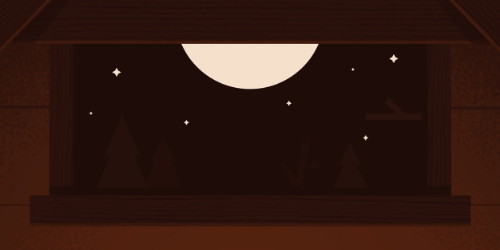
In Circle of Dreams Cole has been forced to develop his own pack. Given the solitary nature of his early life on the run from his own kind, he has learned that going it alone is a safer option. As writers, and I will admit to being one of them, it can be an immense challenge to share my writing, my struggles to find a story, finish it, and shape it. For some, the solitary life of a writer is necessary, for others, a romantic notion. And for many it doesn’t need to be so austere. Perhaps we are wolves of a different sort, and groups like Camp NaNoWriMo give us a pack-like experience that can help us move closer to our goals.

The post Camp NaNoWriMo appeared first on Jane Morrissey.
July 7, 2014
Writing a Strong Leading Lady
Strong heroines inspire us. They spill blood, shed tears and suffer from broken hearts and betrayals. Some are heroes while others villains, or the infamous anti-heroes. From Christine Feehan’s Drake Sister’s series to the controversial Lisbeth in the Girl with the Dragon Tattoo. Now more than ever, society is recognizing and reveling in strong women. From the time that a strong leading lady emerges on the page, the journey begins. For example, although Lisbeth’s character was written by a man, it was written to empower women after a personal event in the author’s life. Lisbeth became who she did because of what was done to her but had beautiful and complex character growth that didn’t shy away from hard to capture themes. She ended up being one of the most unique characters in the market, in a series that was truly ground breaking.
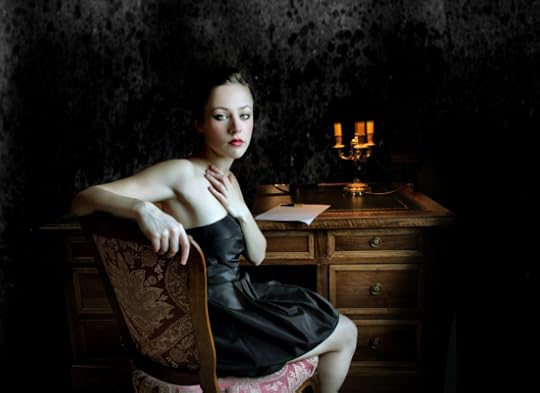
I believe that writing a strong leading lady is not just about giving her strength, incredible intelligence, a special psychic ability, or the role she was ‘born for’. It’s about letting her strength shine through in the moments she faces, whether they are life-changing or every day events. Strong heroines show confidence, perhaps not always in the ‘right moment’, but in moments that matter to them. They impact the world of characters around them because of the choices they make. Take Bri, the heroine from my first novel, Circle of Dreams. She is a “normal” woman (spoiler – minus her heritage) who has lived a fairly “normal” life. She trips up at times, worries and suffers from many of the same things we all have on our plates to deal with. And then there is that catalytic event and the subsequent defining moments that shine a spotlight on her inner strength and integrity, and internal conflict is palpable on the page. Women are passionate lovers, courageous soldiers, and the heartbeat of romantic literature.
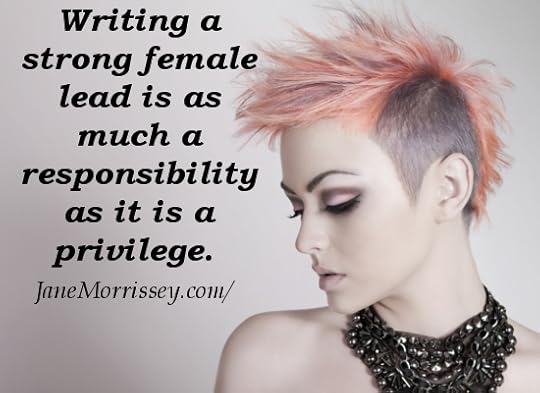
Writing a strong female lead is as much a responsibility as it is a privilege. I find there can be a delicate balance in unpacking the gender dynamics of an romantic adventure. Empowerment is a word that I take for granted, until I’m faced with a situation in which I feel I’m being treated differently because of my gender. For my heroines, there are many of these instances, especially as they wrangle with supernatural men who are often more physically powerful, have lived a lot longer, in some cases, and who are drop dead gorgeous. They are thrown into situations where they are fighting for their lives, grounded in their strength of character and purpose.
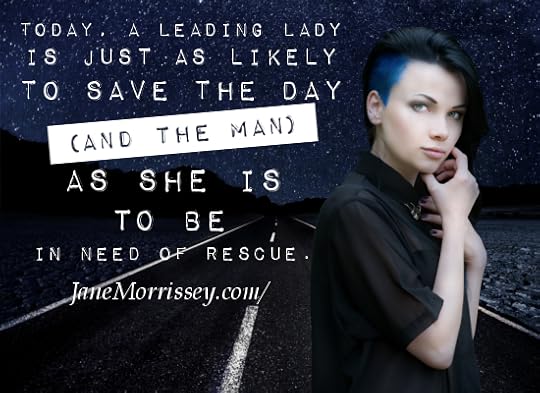
Strong leading ladies have had a hard fight throughout history. There have been many battles won and lost in that battle to be respected, honored and remembered. In literature, we can see how the landscape of this battlefield has shifted. Today, a leading lady is just as likely to save the day (and the man) as she is to be in need of rescue. Reading a story with a strong female lead and writing these roles continue to inspire me.

The post Writing a Strong Leading Lady appeared first on Jane Morrissey.
June 27, 2014
Soulless Book Recommendation!
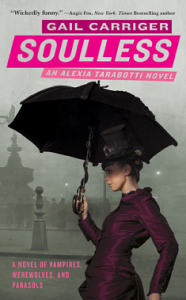 Amazon | Barnes & Noble | Goodreads
Amazon | Barnes & Noble | Goodreads
Alexia Tarabotti is laboring under a great many social tribulations.
First, she has no soul. Second, she’s a spinster whose father is both Italian and dead. Third, she was rudely attacked by a vampire, breaking all standards of social etiquette.
Where to go from there? From bad to worse apparently, for Alexia accidentally kills the vampire–and then the appalling Lord Maccon (loud, messy, gorgeous, and werewolf) is sent by Queen Victoria to investigate.
With unexpected vampires appearing and expected vampires disappearing, everyone seems to believe Alexia responsible. Can she figure out what is actually happening to London’s high society? Will her soulless ability to negate supernatural powers prove useful or just plain embarrassing? Finally, who is the real enemy, and do they have treacle tart?
Author Biography Website | Twitter | Blog | Facebook
Website | Twitter | Blog | Facebook
Ms. Carriger writes steampunk urbane fantasy comedies of manners to cope with being raised in obscurity by an expatriate Brit and an incurable curmudgeon. She escaped small town life and inadvertently acquired several degrees in Higher Learning. She then traveled the historic cities of Europe, subsisting entirely on biscuits secreted in her handbag. She now resides in the Colonies, surrounded by a harem of shoes, where she insists on tea imported directly from London and cats that pee into toilets. Her Parasol Protectorate books are all New York Times Bestsellers.
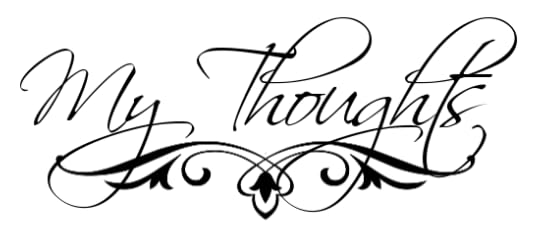
I am a bit new to the steampunk genre but being a long time fan of paranormal romance I decided to give Gail Carriger’s ‘The Parasol Protectorate’ series a try. While the corsets, werewolves, Victorian setting, and paranormal investigators had me intrigued what really pulled me in was the phenomenal pacing and quality writing. My own Quytel Series’ features an elite paranormal investigative team who cross paths with the immortal Quytel and I am always curious about the paranormal worlds and rules other authors create.
The vernacular for this novel is reminiscent of classics like the Bronte sisters, but with a twist of quick- witted, sharp-tongued, fast pacing. I do enjoy a strong female lead, and Alexia does not disappoint. She enjoys breaking the rules and breaking through common literary tropes in the process. It is unusual to read a novel in a Victorian vernacular that includes comedy, a deep and driven plot, and an all around wonderful romance. I found myself captivated. Alexia is everything I look for in a character – flaws and all.
Overall, a highly entertaining read I would suggest to any paranormal romance fan looking to give steampunk a try.
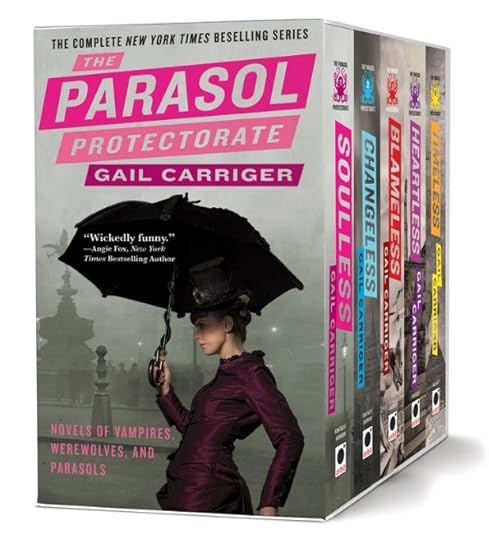
The post Soulless Book Recommendation! appeared first on Jane Morrissey.
June 15, 2014
Why We Love Mystery
All humans feel a thrill at the thought of the unknown. We stare up at the stars and wonder what’s out there. We jump in fright if something scares us. Our hearts beat wildly, not just out of fear, but out of a burning desire to know what frightened us. We’re thrilled by what we don’t know because it gives us a reason to discover – a reason to turn the page and engage with the worlds in our imagination. In those quiet moments when we escape with a mystery laid out on the page, we are transported into a world where our wits are matched by our desire to know. Let’s face it, mulling over the mystery of a story we haven’t figured out and can’t wait to get back to beats worrying about what to make for dinner.

Odysseus, hero of Homer’s The Odyssey, was presented with staying home to witness the birth of his son or the opportunity to become make history by conquering Troy. We agonize along with the tortured conflict in his soul and stand with him on the shore of his kingdom as he stares out across the sea to a land that might bear witness to his death. Adventure and power entice him, and us, as we explore with him that tantalizing draw of the unknown.
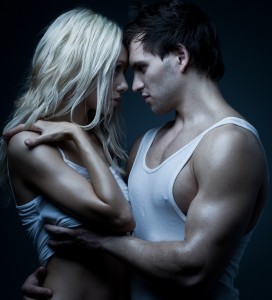
In The Hobbit, by J.R.R. Tolkien, Bilbo Baggins faced a once in a lifetime opportunity to stay in the comfort and security of his own hobbit hole, or jump head first into an unknown world filled with danger and adventure. Despite his fear of the unknown, the burning need in him to ‘know’ leads him out into the big bad world and we join him through the twists and turns of his journey as his life unfolds in ways he could never have anticipated. We’re will him every step of the way, holding our breaths in anticipation of what waits around the next corner.
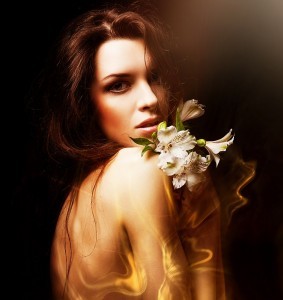
Stephenie Meyer, the author of Twilight, pushed Bella into a world of danger as Edward’s secret continued to elude her. We, as readers could see that she was heading into disaster, and we may shake our head at her choices, but the suspense keeps us turning the page. We followed her journey not because she was a prime example of what to do (because let’s face it, Bella is an example of what NOT to do), but because we are caught in the mystery that keeps us turning the page and wanting more.
Mysteries reach out to us, beckoning with an outstretched hand – perhaps to the burning need we have to reach just beyond our own horizons. The written word extends our imagination into other worlds and allow us to walk in mystery. We love mysteries because we want to become a part of that unseen story, to understand and solve it.
The post Why We Love Mystery appeared first on Jane Morrissey.
April 26, 2014
The Warrior Attraction
Why are we so attracted to warriors in fiction? When I walk through a bookstore I see countless aisles filled with book covers of idealized men that appear larger than life, too good to be true. These covers are carefully designed for marketing of course, but there is also a very real attraction that we as readers have to the warrior ethos, to heroes and gods.
Like the gods and goddesses of the ancient world (i.e. Zeus, Hercules, Athena, Diana etc.) warriors are often idealized and worshiped as heroes. Warriors often seem bulletproof, unable to be killed or stopped (at least not for long). If they are beaten down, they rise again stronger than ever, to once again commit to a greater purpose and to protect their loves ones. Their lives are in some ways single minded, a larger purpose of protection or power rules their narrow worlds. As readers we can enter into their worlds with the agreement that the vagaries of our human existence and day-to-day decisions become background noise, barely a consideration in the face of the extreme circumstances our warriors must face.
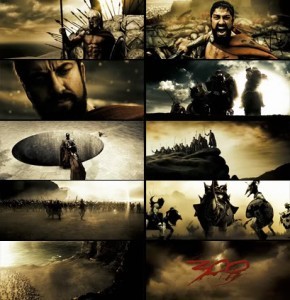
In literature they command an unusually strong level of attraction. We read tales of men like Hercules, freedom fighters who swoop in to save heroines (or heroes) at the last moment, and men and women of various ages who learn to stand tall when the sky itself is falling down on them. Our hearts jump when they commit to battle and we join with them eagerly turning the pages to see what happens next in their struggle, to see if they really can survive against insurmountable odds.
We have an attraction to warriors because we believe they can protect us and we want to be protected from a visceral fear of death, from chaos and destruction, the unknown. It’s a romantic notion, but one that continues to call out to us, pull us into stories and ignite a passion larger than ourselves. Even the characters who start out weak but grow into heroes as a story progresses become a source of inspiration. We remember their words, triumphs and pain.
Warriors fascinate because they are like us; we see that they stand tall when we’re unsure if we would be able to do so in a similar situation, no matter how fantastical. They call out our names and hold an answer to a desire within our hearts. Why are we pulled so strongly to them? Perhaps the attraction to the warrior is a manifestation of our ideal protector, whether a man, woman or supernatural being. We first drew them on cave walls and scrolls, leather bound works, and now they are available at the tips of our fingers whenever we want. We have only to hold out our hands and the warriors will be at our sides, their battles and losses ours to share.
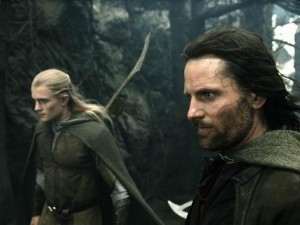
Warriors are attractive because they are very real to us, and provide a mirror into our idealized selves. We yearn to wrap our arms around them when they fall down in a moment of weakness, pain or loss. We want to ease their pain and get them back on their feet. It’s an interesting flip when we yearn to protect and be protected. The warrior ethos inspires us to be stronger and to stand for an ideal that is worth fighting for… at least until we close the cover of the book and return to our lives where there are often not clearly delineated lines between good and evil. The battle fields where we strive to be true to our higher selves can often be unclear and difficult to navigate in the face of other priorities. The warrior gives us a moment to live in the fantasy of clear right and wrong and we know that in the pages of our book our hero will, in some form, prevail.
The post The Warrior Attraction appeared first on Jane Morrissey.
April 16, 2014
What makes a Good Villain?
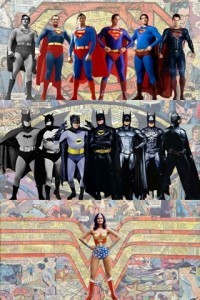 A villain with a good accent makes our ears twitch just right, the fiery expressions in their eyes and how they are never afraid to show true emotion inflame our hearts. If a hero shows emotion, usually he or she ends up dead due to a moment of weakness. But the villain… Ah the villain! A truly good villain can be true to his or herself and always survive.
A villain with a good accent makes our ears twitch just right, the fiery expressions in their eyes and how they are never afraid to show true emotion inflame our hearts. If a hero shows emotion, usually he or she ends up dead due to a moment of weakness. But the villain… Ah the villain! A truly good villain can be true to his or herself and always survive.
A well known villain is Lex Luthor from the Superman stories. Clark Kent, the alter ego of Superman, met Lex Luthor when he was young. Often in literature we will find that our heroes and villains know each other and become friends long before they are destined to become adversaries.

But what makes a good villain so seductive to us? Good girls supposedly like bad guys. Why? Because we can’t help but see the good in them. We see their human quality. The reason why Superman couldn’t kill Lex Luthor, despite all of the harm Luthor caused, is because Clark Kent remembered his friend.
Villains are not black and white. They are a kaleidoscope of human qualities and weaknesses that lead them to what they become. But villains are also unafraid to reach out in strength.
In a previous post I discussed Bram Stroker’s Dracula (1897). Dracula is sensational not merely because of the fear he imposes, but because of the seductive nature of his heart. He yearns to live and fights to, he also feels strength and fear, and can love as deeply and passionately as anyone, if not more so because of his honesty involving the monster within. You can’t help but hate him for the lives he destroys, and you can’t help but love him for his oh so human heart.
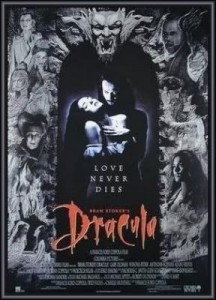
What makes a good villain are the readers and the fans who fall in love with them. Another immortalized and unforgettable example is none other than Darth Vader, a.k.a Anakin Skywalker, the greatest villain of the Star Wars saga. His mother was killed, yet we felt a kinship with him for his pain even as he wiped out an entire village of innocent sandmen and women. In a rage he accidentally killed the love of his life, yet our tears mingled with his. And in that final moment where he tells his son that Luke had already saved him, even though he would be unable to save him physically, we bow our heads in a moment of silence.
A good villain is not how cruel or how evil he or she is, but rather it is the epitaph left behind. Some critics claim originality is dead, but the true villain is one that, just like a hero, arises from the ashes and burning rubble, untouched and unblemished, to reach out again with invisible hands around our hearts and blur the lines of right and wrong in the literary world.
The post What makes a Good Villain? appeared first on Jane Morrissey.
April 3, 2014
Unloved Other Creatures: Lamia
Lamia, a beautiful Libyan queen was, unfortunately, one of Zeus’ many objects of affection. As we know from other stories, most of Zeus’ lovers’ fates take a terrible turn, e.g., Callisto (turned into a bear and then, to spare her from Hera’s wrath, she was later turned into a constellation), Ganymede (boy youth abducted to become a cup bearer, which is somewhat of an honor, except that to spare him from Hera’s wrath he was later turned into a constellation), or Europa (abducted by Zeus in bull-form and ravished). In Lamia’s myth, Zeus falls in love with her beauty, and Hera finds out about the affair.
To punish Lamia, Hera transforms into a monster and kills all of Lamia’s children (except Scylla) while Lamia watches. Some variants of the story are accounted for here:
As if killing her children isn’t enough, Hera then takes away Lamia’s ability to blink or close her eyes, so that she would be forever haunted by the sight of her dead children. (Also, in some variants of this particular strain, Zeus alleviates this curse by giving Lamia the ability to take her eyes out of their sockets.)
Hera doesn’t actually kill the children—she only steals them—causing Lamia to go insane with grief and tear out her own eyes.
Rather than killing the children herself, Hera forces Lamia to kill and devour her own children.
And whether it happens out of the madness found in grief for her children’s’ death, as a part of Hera’s punishment, or as a gift from Zeus in order to exact revenge on the world for what has been done to her, Lamia is transformed into a monster that hunts and devours other people’s children. Lamia’s name may derive from the Greek word, “laimos,” which means, “gullet,” or the word “lamia” itself, which in forms of Latin/Greek mean “swallower, lecher.” Lamia is sometimes referred to as being a daughter of the sea god Poisedon, or as a daughter to Belus, a king of Egypt in Greek mythology, who is himself a son of Poisedon. (Weird!) Some attribute the etymology of her name to meaning something like “lone shark.”
Lamia’s sexual depravity matches her bloodlust for children, in her famed penchant for sucking young men’s blood, giving way to notions that she is the mother of succubus and vampire myths.
Sources attribute the representation of Lamia as half-woman, half-snake to John Keats’ poem “Lamia,” but this is a bit of a stretch.
In the actual poem, Lamia is a snake that Hermes turns into a woman as a reward for helping him find an invisible nymph. In the poem, Lamia uses her new woman-shaped beauty to seduce a man she once saw.
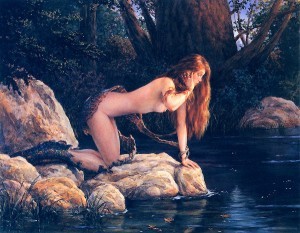
Their passionate love, hinged on the illusory nature of Lamia’s womanly beauty, comes to a crashing halt when at their wedding banquet, a philosopher named Apollonius reveals her to be a serpentine creature and she disappears. Famous Greek historian, Diodorus Siculus, cites that she merely has a distorted face.
In Roman mythology, she maintains the figure of a beautiful woman and is depicted in famous twentieth century paintings as such, with a snakeskin in her lap.
Lamia’s surviving daughter, Scylla, seems to have inherited her mother’s bad luck, as she is also a beautiful maiden who is transformed into a hideous monster by another god’s jealous wife. Sometimes Scylla is described as having a serpent’s tail and an offshoot of twelve human legs, and/or as having six hideous heads with sharp teeth. Her voice was likened to the yelping of dogs. This description of Skylla is probably derived from the imagery of words associated with her name : namely, “hermit-crab” (Greek skyllaros), “dog” and “dog-shark” (skylax), and “to rend” (skyllô). In classical art she was depicted as a fish-tailed sea-goddess with a cluster of canine fore-parts surrounding her waist!
The story of Lamia has fallen into convolution and obscurity, and what remains is her image, or at least, images popularized by artists’ impressions of her monstrous form.
The post Unloved Other Creatures: Lamia appeared first on Jane Morrissey.
March 8, 2014
Book Review: Lover Eternal (2006) by J.R. Ward
“You are a manipulator.”
“I like to think of myself more as an outcome engineer.”
Throwback to 2006. J.R. Ward’s Black Dagger Brotherhood series brought me absolute catharsis with its ability to enthrall me into complete distraction. I picked up the second book of the series and reread it: Ahh, Lover Eternal. The sex scenes were mind blowing. If you don’t believe me, check out what the sexy, dirty vampire protagonist says to Mary:
“What you just had is nothing compared to what I want to do to you. I want my head between your legs so I can lick you until you scream my name… I want to screw you standing up, against the wall. I want you to sit on my hips and ride me until I can’t breathe.”
The Brotherhood is a group proud of vampire warriors that defend their dying race. In Caldwell, New York, the Brotherhood is engaged in a turf war with slayers, called Lessers, to protect the civilian vampires. Rhage, arguably the strongest of the Brotherhood, was cursed long ago with an uncontrollable demon that must be sated nightly through acts of sex or aggression, or else it unleashes itself on friend and foe alike.
Rhage is arrogant, impulsive, and apathetic—until he meets Mary Luce, a twice-survivor of cancer who volunteers her time at the local Suicide Hotline to fill the void of her lonely life. The beautiful cadence of Mary Luce’s voice captivates high-testosterone, sexy Rhage and soon Mary becomes an unwilling lover embroiled in the turf wars between the Brotherhood and the Lessers.
The biggest pro of this book is that the sex scenes are nothing short WOWgasm.
The behind-the-couch scene was scorching hot!

All of us get what our imaginations want, because Rhage’s room is described to have a Victorian flair with candles everywhere.
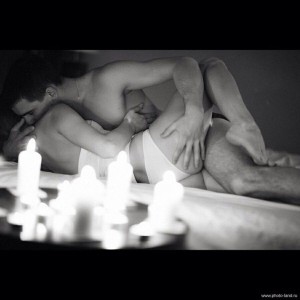
The biggest con of this book was that the sex was SO good that everything else about the story paled in comparison. Many contrived devices were utilized to bring the two into contact that all other interesting avenues, such as enemy Mr. O, mute John, and civilian vampire Bella, get lost in the mix. This is most likely because the writing for most of the other non-sex scenes was underwhelming, and for the most part, perfunctory ways of legitimizing the stakes of the love story. I gave into temptation and skipped to the juicy parts, and then back-pedaled to figure out the “relevant” aspects of the plot.
Also, the prose is a little too hard-boiled, edgy, and masculine, as if trying to convince the reader that it was written by a male—but then the sensibilities of the vampire warriors also comes as a silly surprise because they are oh so sensitive underneath those hard, “shit-kicking” exteriors. Many of the characters came off as a bit… awkward. In fact, Mary Luce is the only character who seems in her element, and it is because she is antisocial and purposefully awkward.
I still recommend the book because it is a fun read and it’ll keep you itching to read more until the very end. What the prose lacks in originality, it makes up for in accessibility, which is still a virtue.
The post Book Review: Lover Eternal (2006) by J.R. Ward appeared first on Jane Morrissey.
February 28, 2014
Roots of Paranormal Romance
My previous post featured Bram Stoker’s Dracula (1897), a classic gothic horror novel, that to me seemed to be the seedling for modern vampire fiction. Dracula sensualized terror and danger, and ruminated on the complexity of immortal beings in a nuanced way that made it possible for later authors to develop even more complex and tortured characters, such as Interview with the Vampire’s Louis, created by Anne Rice. I want to take a look even further back, to the seedling for Dracula, as well as all speculative fiction, romantic and horrific. I read this particular story in school and understood it to be the first gothic novel ever written: The Castle of Otranto by Horace Walpole in 1764.
In The Castle of Otranto, the supernatural and the prophetic converge into a haunting, Oedepus Rex-esque fulfillment of horror. Manfred, lord of the castle, is obsessed with protecting his own family line, which is threatened in the very beginning of the novel where his son, Conrad, who is set to marry Princess Isabella, is crushed to death out of nowhere by a huge flying helmet. Through several fruitless attempts to capture the princess and marry her himself, Manfred becomes enraged and decides to thwart her secret love by killing her—and instead accidentally murders his own daughter, Matilda.
Otranto is a brief piece of literature with several elements: horror, the supernatural, lust-driven madness and murder. What made the book so revolutionary in its time was its ability to blend realistic characters (read: tread lightly with the concept of “realistic” when reading the book using your contemporary consciousness of realism) with fantastical situations and elements, such as large helmets falling from the sky, spectral skeletons, statues dripping blood, walking portraits, mysterious sounds, doors opening by themselves. All of these elements seem fairly commonplace now but back then they were zany, highly entertaining, and imaginative.
Otranto came just twenty years after the revolutionary romance novel, Pamela, or Virtue Rewarded, by Samuel Richardson: the antagonist, Mr. B, abducts Pamela, locks her up in one of his estates, and attempts to seduce and rape her. She rejects him continually, but starts to realize that she is falling in love with him. She eventually wins him over with her innocence. The literary community of the time was accustomed to very conservative romantic notions and were unfamiliar with such dangerous episodes. One such person of the day could not un-see the sensual danger that their imaginations conjured by reading Pamela. The lucky few who lived long enough to read and enjoy Otranto’s licentious and cruel Manfred twenty years later would have most certainly been avid readers of Dracula, Interview with the Vampire, Twilight, of authors like J.R. Ward and Christine Feehan, or myself.
Otranto (the gothic, the supernatural) and Pamela (erotic notions in romance) were not considered masterpieces of their day. In fact, these books were “low” forms meant to appeal to the masses with their sexual and fantastical elements. These books thrived because audiences wanted to experience the dark side of their imaginations. Novels after them saturated the market, exploring similar elements in different combinations, until several helixes of gothic and romance mixed and eventually created paranormal romance. Otranto and Pamela and their revolutionary look at the dark side gave way to the “Libertine” novel, which features anti-establishment, anti-church, and strong pro-erotic elements. It took bravery to write in these early forms, at the risk of abhorrent criticism and ostracization from the very conservative body (almost everyone at the time) in society.
What kept these books (and their genres and sub-genres) alive, was the solidarity shown by supportive readers.
Even now, it isn’t the conservative, ivory tower elite that commands the tide of Paranormal Romance literature. It is the reading community. Readers do not just dictate what’s hot, and what’s not in the latest lycanthrope hunk buzz. New sensibilities about romance are being thought of collectively, shared, and then responded to through authors’ pieces, in dialogue. Fan fiction of speculative fiction, paranormal romance forums, adaptations of paranormal romance into movies, all of these show the strong consciousness of many to share in the fantastical and to keep pushing against boundaries in the emotional, erotic tenets of paranormal romance.
The post Roots of Paranormal Romance appeared first on Jane Morrissey.
February 19, 2014
How Does Paranormal Romance Make Loving Vampires Normal?

In the popular culture of paranormal romance, it seems that audiences have come to accept that vampires and lycanthropes are lovable even though early myths about them were gory, frightening, and bizarre. Count Orlok from F.W. Fernau’s brilliant, haunting German auteur film, Nosferatu, comes to mind when I think of visual representations of ancient supernaturals: anemic-looking; dark circles around the eyes; long, sharp teeth; gnarly, twig-like fingers; and a bald head with a twisted grimace.
Paranormal romance turns the scary stuff into erotic stuff. But let’s forget our undead pretty boys for a second and instead figure out how we got from ghouls to gods? How in the world did these blood-sucking, evil creatures become such lauded centerpieces of paranormal romance? Why is it that we love to love the vampire? What turns seemingly dangerous and feral elements such as feeding off other people into something that turns us on?
I think it may have to do with the way literature over the years has gradually transformed hideous creatures into sentient, empathetic beings.
Tracing this transformation back to its roots, I found myself looking into archives from the 1700s and 1800s, where I unearthed myths of Romania’s Strigoi. It seems that the Strigoi are the earliest link to characteristics found in our modern/contemporary vampire literature because the Strigoi were, at some point in their lives, human. The idea of the Strigoi dates back to Ancient Greece and the Dacian people, a prolific tribe who referred to themselves as a people who ran with the wolf; stories about the Dacians shape-shifting into wolves were common, and the god they worshipped was the wolf.
Not coincidentally, Dacians populated the region of Romania now known to us as Transylvania, where tropes about vampires and ‘the Dracula connection’ (think Bram Stoker’s Dracula (read for free here; the film Nosferatu is its adaptation), are often made, according to Lonely Planet’s tourism description about this spooky region along the Carpathian mountain range. Romanian lore suggests that the Strigoi possess certain traits: the seventh consecutive birth of the same sex in the family; red hair; a life of sin; or having been cursed by a witch. Once a Strigoi dies, he is reanimated and comes back to haunt the living, sometimes possessing the ability to shape-shift. Then he searches for blood.
Visual representations of Strigoi are, for lack of a better word, freaky; they’re like a sort of winged zombie. They look how we expect someone to look after they’ve been reanimated after death: terrifying. An Authenticated Vampire Story, written by Franz Hartmann in 1909, perfectly portrays the malevolence and terror of Strigoi. Peasant children from a region in the Carpathian Mountains mysteriously begin to die. The villagers suspect the deceased count haunting his old fortress (rumored to be a Strigoi), and so they burn the castle to stop the deaths.
Killing little children for food, or even for pleasure? This doesn’t sound very lovable or sexy at all!
But wait. I read a fascinating article about the in Travels in Romania: Myths of Origins, Myths of Blood, which can be read here for free or on JStor as a free download for all of you scientific journal readers out there. Bram Stoker wrote Dracula in 1897, a milestone piece for paranormal romance because of the introspective yearnings of a monster that we to whom could relate.
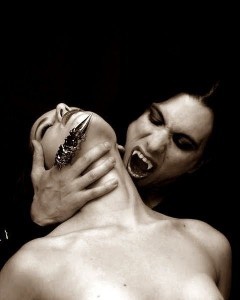
The 1890s were recognized as the birth of self-conscious embarrassment over others’ displays of decadence, the declination of the Victorian era, and ultimately, the declination of Britain. David Glover posits in Travels in Romania that Dracula is a reactionary myth that embodies the eternal struggles—of good and evil, of modest and immodest, of simple and decadent—in fears of sexual possession, where “scenes of seduction are just a breath away from rape, and a defenselessness is a precondition of pleasure.” As people were turning to modesty, their natural urges to splurge, to incite envy over their wealth, to dress provocatively, and to be liberal and licentious became “underworldly desires.” People in Britain were beginning to struggle with the concept of sin and salvation, of being a monster or being human.
Dracula is characterized by Glover as a “claustrophic” tale because the sexual conflicts are uncanny to the sexualized bloodlust desires that lurk beneath the calm surface of each of us. Glover calls this sexual and cultural uncanny an “unsettling otherness which is hauntingly familiar, insinuatingly intimate but somehow always deeply foreign.”
A bit much, maybe?
This is a provocative idea. I’m not saying that we identify with the ugliness of the monster (at least not on a literal level) but more with the imaginary stakes involved with associating ourselves with the monster, or likening our sins to his, or her sins. We identify with the ideologies of a sympathetic creature struggling to be… human. Unlike the myths of old where humans transformed into ugly, inhuman creatures, contemporary authors have created transference from less human to more human. The seemingly foreign, supernatural concept begins to familiarize itself until we use descriptions such as “more human” as positive affirmations.
In light of a monster’s “new humanness” (think Frankenstein’s monster, or Angel the broody, gorgeous vampire with a soul from Buffy the Vampire Slayer, or more recently Bill and Eric from True Blood) we begin to make connections between the “bad” desires of the monster and his conscientious struggles to become “good.” We lend our hearts out to the struggles of these troubled, often morally ambiguous, and more often than not male leads, who transcend the primal stage to emotional and intellectual sophistication. The monster turns into an intimate figure of transformative hope, and in this respect, begins to resemble something lovable and sexy.
Paranormal romance embraces the uncanny, foreign, feral aspects of human beings and anthropomorphizes them into supernatural heroes and heroines. These supernaturals then flirt with the concepts of falling in love with their human counterparts and struggle with becoming more human. We get to experience the dark and the feral and the erotic through them; but also, we get in their struggle to find reception to a deep love, the kind that elevates the primal to the sentient empathetic. They are the ultimate lover: complex, dark, and fighting for love.
The post How Does Paranormal Romance Make Loving Vampires Normal? appeared first on Jane Morrissey.

